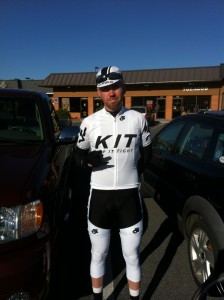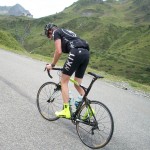
Sports: Cycling, Bouldering, Trail Running, Skateboarding
Favorite Event: Northampton Cross and Sterling Road Race
Strengths: Above average Microsoft Excel Skills, so, a detailed analysis of performance after hammer was put down. Complete with pie chart and/or bar graph.
Entry into endurance sports: I bought my first bicycle with gears on my 30th birthday, started with the Maine Time Trial Series the following year.
Years competing in endurance sports: 5
By guest KIT blogger, Dave Andersen

Endurance sports require humility and patience. We all start with baby steps and then gradually move forward in our athletic journey. Some move forward rapidly, others, one step at a time. No matter how fit you are, if you are going to be an endurance athlete—at least in my experience—you better be able to eat humble pie. Here’s a quick story…
The Journey Becomes Our Lifestyle
Back in high school when I was a year or two into my running “career” my little brother decided he wanted some of the fun. So he joined me at a 7 mile road race and proceeded to beat me. That was my introduction to the fact that some people have a genetic gift (high VO2 max, etc) and their steps forward are bigger. While I was pretty happy to run sub 10-minutes for 2 miles in high school, my little brother was about 1-minute faster. Years later his sub 2:30 marathon would drive the point home.
So, really the goal for 99% of us (nonprofessional athletes) is to have fun and, given our physical and time limitations, try and reach our own personal limits. That being done, we must be satisfied. I know I am. I’ll go a step further and say it’s the journey (training) which becomes our lifestyle, which is perhaps most rewarding and brings a rare quality of life. Sure a solid race performance underlines all the hard work and sacrifice, but they are often far and few between.
The bottom line is: those of us that can follow our passion for fitness, sport, or even regionally high-level racing should never take it for granted or put too much expectation upon ourselves. Work as hard as you can without sacrificing your job, family, etc. It is a gift to do what we do and in the context of a balanced lifestyle it doesn’t really matter if you make the podium or come in with the pack. Do the best with what you have and be satisfied. Then flip on the internet and watch Tom Boonen riding away, while you dream away.Tom Boonen 2012 Paris Roubaix
KIT!
——————-
*Dave Andersen lives in Boston and works in the educational publishing business. He shares his passion for cycling and sport with a wide range of friends and competitors.